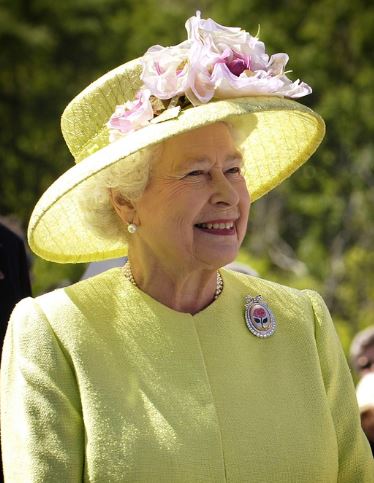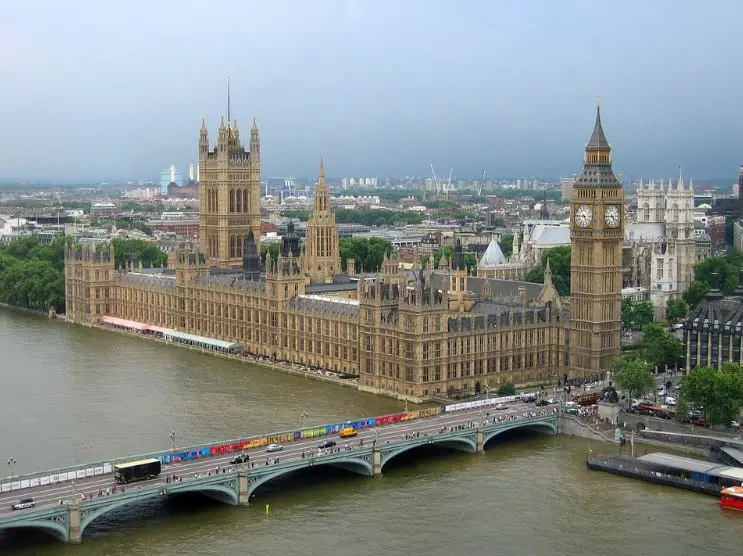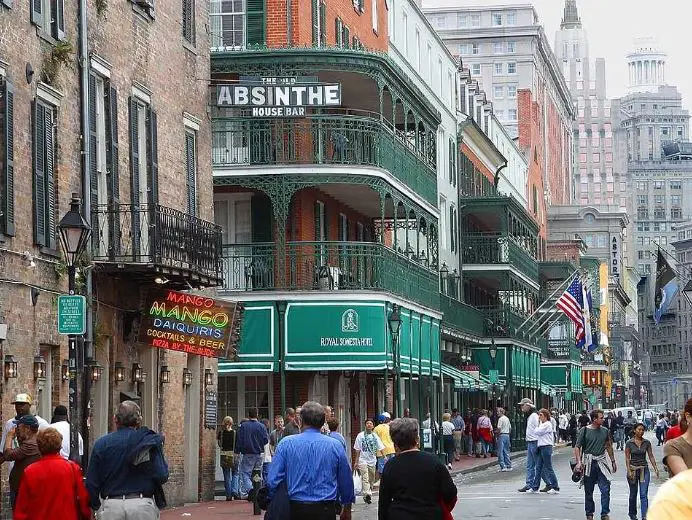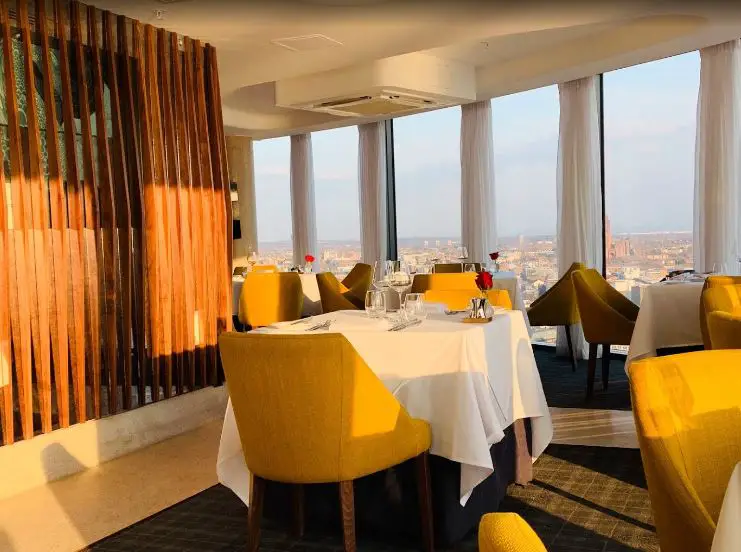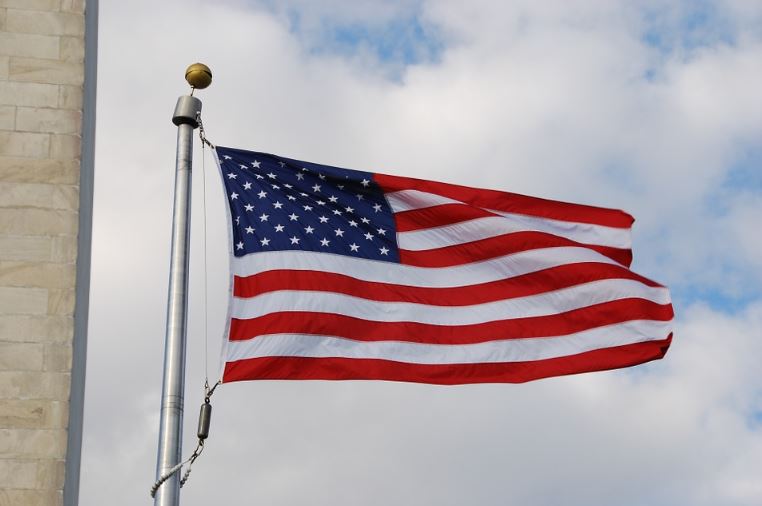London, United Kingdom: Interesting Facts,History, Things to do,Why to Visit
Post ByAdequate Travel
London, United Kingdom is one of the most popular cities in the world. From the rich history, to the modern day developments, London has a lot to offer. With its iconic landmarks and cosmopolitan culture, it’s a must-visit destination for anyone looking for a unique experience. But beyond the usual attractions, London is full of interesting facts and things to do, and of course, reasons why you should visit. From the historical sites to the vibrant nightlife and great parks, London has a little something for everyone. So, read on to find out more about the amazing things to see, do, and experience in London, United Kingdom!
London, the capital city of the United Kingdom, is a vibrant and diverse metropolis known for its rich history, iconic landmarks, and cultural offerings. With a population of around 8.9 million, it is one of the most populous cities in Europe.London is famous for its top attractions, including the historic Tower of London, Buckingham Palace, and the Houses of Parliament with Big Ben. The city is also renowned for its world-class museums and art galleries, such as the British Museum and the National Gallery, which house priceless artifacts and masterpieces.The city's cosmopolitan nature is reflected in its diverse culinary scene and international cuisines, as well as its multicultural neighborhoods, such as Chinatown, Little India, and Brick Lane. It is a hub for cutting-edge fashion, shopping, and entertainment, with trendy districts like Soho, Covent Garden, and Camden offering a wide range of boutiques, markets, theaters, and music venues.London also boasts numerous green spaces and parks, including Hyde Park and Regent's Park, providing oases of tranquility amidst the bustling city. The River Thames runs through the heart of London, offering scenic boat cruises and picturesque riverside walks.Transportation in London is well-connected, with an extensive underground subway system known as the Tube, buses, and taxis. The city is a global financial center and home to the London Stock Exchange, as well as a thriving business hub attracting professionals from around the world.Despite being known for its unpredictable weather, London's charm lies in its ability to blend history with modernity, providing something for everyone, from historical enthusiasts to art lovers, foodies, and fashionistas. It continues to captivate visitors with its timeless appeal and as a cultural powerhouse.Discover unique facts about London, United Kingdom, a destination filled with rich history and natural beauty.
Interesting facts
History of London
London, the capital city of the United Kingdom, has a rich and fascinating history. It was founded by the Romans in AD 43, and over the centuries, it has grown into a global city with immense cultural, political, and economic significance.
1. Historical Landmarks
London is home to numerous historical landmarks that attract millions of tourists every year. Some notable examples include:
a) The Tower of London: Built in the 11th century, it has served as a royal palace, prison, and treasury throughout its history.
b) The Houses of Parliament: The iconic Palace of Westminster is where the British Parliament meets and houses the famous Big Ben clock tower.
c) Buckingham Palace: The official residence of the British monarch, known for the Changing of the Guard ceremony.
2. Cultural Diversity
London is renowned for its diverse population, with over 300 languages spoken within its boundaries. This cultural melting pot has led to a vibrant and inclusive atmosphere, showcasing various cuisines, festivals, and traditions from around the world.
3. Literary Hub
London has been a significant inspiration and setting for many prominent authors and literary works. It is associated with names like William Shakespeare, Charles Dickens, Virginia Woolf, and many others. The city houses famous literary landmarks such as Shakespeare's Globe Theatre and the British Library.
4. World-Class Museums
London is home to world-renowned museums that house unique and extensive collections. Visitors can explore artifacts, artworks, and historical treasures from various eras and civilizations. Examples include the British Museum, the Victoria and Albert Museum, and the Natural History Museum.
5. Transport System
London's transport system is one of the most extensive and efficient in the world. The iconic red double-decker buses, the London Underground (known as the Tube), and the black taxis are all integral parts of the city's identity. They make navigating the vast metropolis convenient for both residents and tourists.
Overall, London's history, diverse culture, literary heritage, museums, and efficient transport system make it a captivating and dynamic city to explore. Its iconic landmarks and vibrant atmosphere attract millions of visitors every year.From museums to parks,London, United Kingdom tourist attractions offer something for everyone, making it a versatile destination for all type of tourists.History of London, United Kingdom
London, the capital city of the United Kingdom, has a rich and diverse history that dates back over two millennia. From its humble beginnings as a Roman settlement to its rise as a global financial hub, London has undergone significant transformations throughout its history.
1. Roman Era (43 AD - 410 AD)
London was founded by the Romans in 43 AD and was known as Londinium. It quickly grew into an important trading hub and a major port along the River Thames. The Romans established a bridge over the Thames, which played a crucial role in the development of the city. Excavations have revealed artifacts and structures from this era, such as the remains of the London Wall.
2. Medieval Period (410 AD - 1485 AD)
During the Middle Ages, London underwent significant growth and development. It became the political and economic center of England, with the construction of iconic landmarks such as the Tower of London and Westminster Abbey. The city also faced challenges, including the devastating Great Fire of London in 1666, which led to the reconstruction of the city.
3. Tudor and Stuart Era (1485 AD - 1714 AD)
London experienced a period of cultural and artistic flourishing during the reign of the Tudors and Stuarts. The Tudor dynasty saw the construction of famous structures like Hampton Court Palace and the Royal Exchange. In the Stuart era, London became a major center for trade and commerce, which laid the foundation for its future as a global financial hub.
4. Victorian Era (1837 AD - 1901 AD)
The 19th century marked a period of tremendous growth for London, fueled by the Industrial Revolution. The city expanded rapidly, with the construction of railway networks, public parks, and iconic landmarks like the Houses of Parliament and the British Museum. The Victorian era also saw significant social and cultural changes, including the expansion of the British Empire.
5. Modern London
London continued to evolve in the 20th century, facing challenges such as the devastation during World War II and rebuilding efforts in the post-war period. Today, London is a global metropolis known for its vibrant multiculturalism, thriving arts scene, and status as a leading financial center. It remains a hub of innovation, attracting millions of tourists and residents from around the world.
Overall, London's history is a tapestry of ancient Roman foundations, medieval grandeur, Tudor and Stuart splendor, Victorian progress, and modern cosmopolitanism. Its rich history is evident in its diverse architecture, iconic landmarks, and the interplay of tradition and innovation that defines the city's character.Exploring the rich heritage of historical sites in London, United Kingdom is a journey through time and culture.Famous Landmarks in London
London, the capital city of the United Kingdom, is known for its rich history, diverse culture, and iconic landmarks. Here are some of the famous landmarks in London:
Tower of London
The Tower of London, a historic castle located on the north bank of the River Thames, is one of the city's most iconic landmarks. It has served various purposes over the years, including royal residence, prison, and treasury. The tower is home to the Crown Jewels and has a renowned collection of arms and armor.
Big Ben
Big Ben is the nickname for the Great Bell of the clock at the north end of the Palace of Westminster. It is one of the most recognized symbols of London and is a prominent feature in the city's skyline. The clock tower, officially known as Elizabeth Tower, stands at over 96 meters and offers breathtaking views of the city.
Buckingham Palace
Buckingham Palace, situated in the City of Westminster, serves as the official residence and administrative headquarters of the British monarch. It has been the principal residence of the reigning monarch since Queen Victoria's accession in 1837. The Changing of the Guard ceremony outside the palace is a popular tourist attraction.
The British Museum
The British Museum is one of the world's largest and most comprehensive museums, housing a vast collection of art and artifacts from around the globe. It showcases pieces from various civilizations, including Ancient Egypt, Ancient Greece, and the Roman Empire. The museum is free to enter and attracts millions of visitors each year.
The London Eye
The London Eye, also known as the Millennium Wheel, is a gigantic Ferris wheel located on the South Bank of the River Thames. It offers panoramic views of the city and has become one of London's most popular tourist attractions. The 32 capsules of the London Eye can hold up to 25 people each.
Trafalgar Square
Trafalgar Square is a public square in the City of Westminster, known for its iconic Nelson's Column and the famous lion statues. The square is a popular meeting point and hosts various cultural events, protests, and celebrations. It is surrounded by important landmarks such as the National Gallery and St Martin-in-the-Fields church.
These are just a few examples of the famous landmarks in London. The city has a multitude of other notable attractions, historical sites, and cultural institutions that continue to draw visitors from around the world. Each landmark carries its own significance and contributes to the rich tapestry of London's heritage and allure.Discover some unique facts about London, United Kingdom that will leave you amaze and intrigue.Culture of London, United Kingdom
The culture of London is diverse and vibrant, blending elements from the city's rich history and its thriving multicultural communities. Here are some key aspects that contribute to the unique cultural fabric of London:
1. Art and Museums
London is home to world-class art galleries and museums, showcasing a wide range of artistic styles and historical artifacts. The British Museum, Tate Modern, National Gallery, and Victoria and Albert Museum are just a few examples of the numerous institutions that attract art enthusiasts and history lovers from around the globe.
2. Theatre and Performing Arts
London's West End is renowned for its exceptional theatre scene, hosting an array of musicals, plays, and other live performances. The city is also famous for its Shakespearean heritage, with the reconstructed Globe Theatre and the Royal Shakespeare Company's productions being prominent highlights.
3. Music
London has a vibrant music scene, embracing a variety of genres. It has been a prominent hub for British rock, punk, and pop music, with legendary venues like the Royal Albert Hall and Abbey Road Studios. Additionally, London hosts various music festivals throughout the year, including the world-renowned Notting Hill Carnival.
4. Festivals and Events
London hosts a multitude of festivals and events that celebrate different cultures, religions, and traditions. These include the Chinese New Year celebrations in Chinatown, Diwali festivities in Trafalgar Square, and the vibrant Pride in London Parade. The city's calendar is filled with such diverse events that cater to audiences of all backgrounds.
5. Cuisine
London offers a vast array of culinary experiences, reflecting its multicultural population. From traditional British pubs serving fish and chips to Michelin-starred restaurants offering global cuisines, the city has something to satisfy every palate. Areas like Brick Lane with its renowned curry houses or Borough Market showcasing local produce are excellent examples of London's vibrant food culture.
6. Fashion and Shopping
London has long been a prominent fashion capital, known for its innovative and eclectic styles. From high-end designer boutiques in Mayfair to trendy vintage shops in Camden, the city provides a diverse shopping experience. London Fashion Week is a major event that attracts industry professionals and fashion enthusiasts from around the world.
7. Multiethnic Communities
London's multicultural population shapes its vibrant cultural landscape. The city is home to diverse communities originating from various countries and cultural backgrounds. Neighborhoods like Brick Lane, Brixton, and Notting Hill showcase the unique traditions, cuisines, and customs of different cultures and offer a rich tapestry of experiences.
In conclusion, the culture of London is a melting pot of art, theater, music, festivals, cuisine, fashion, and diverse communities. This vibrant and diverse cultural scene makes London one of the most exciting and cosmopolitan cities in the world.Immerse yourself in the local culture by exploring London, United Kingdom's top-rated tourist attractions.Cuisine of London, United Kingdom
London, being a multicultural city, offers a diverse range of culinary experiences with cuisine from all over the world. From traditional British dishes to international cuisine, there is something to cater to every taste and preference.1. British Cuisine: London is known for its traditional British dishes such as fish and chips, pies, Sunday roasts, and a variety of delicious puddings. Many traditional British pubs and restaurants serve these classic dishes with a modern twist.
2. Indian Cuisine: With a large population of Indian immigrants, London has a vibrant Indian food scene. You can find a diverse range of Indian restaurants serving dishes from various regions of India, including popular favorites like curry, tandoori, biryani, and street food like samosas and chaat.
3. Italian Cuisine: London boasts numerous Italian restaurants offering authentic and modern Italian dishes. From traditional pasta and pizza to regional specialties, you can indulge in a variety of Italian flavors in the city. Brick Lane is particularly famous for its Italian restaurants.
4. Chinese Cuisine: London's Chinatown, located in the heart of Soho, is a bustling hub of Chinese restaurants and culinary delights. From Cantonese to Sichuan cuisine, you can find a wide range of Chinese dishes, including dim sum, Peking duck, and hotpot.
5. Middle Eastern Cuisine: London also offers a rich selection of Middle Eastern cuisine, with many Lebanese, Turkish, and Persian restaurants scattered throughout the city. Enjoy delicious kebabs, mezze platters, falafels, and baklava in these establishments.
6. African and Caribbean Cuisine: London's multicultural environment is reflected in its African and Caribbean food scene. From West African jollof rice to Jamaican jerk chicken, you can explore the vibrant flavors and spices of these cuisines in specialized restaurants and street food markets.
7. Street Food and Markets: London is renowned for its vibrant street food culture. Borough Market, Camden Market, and Portobello Road Market are just a few examples of places where you can try a variety of global cuisines, from gourmet burgers to Mexican tacos and Vietnamese banh mi.
In conclusion, the cuisine of London is a melting pot of flavors from all around the world. With its diverse culinary scene, you can embark on a culinary journey and satisfy your taste buds with a wide range of traditional and international dishes.Exploring the city's diverse neighborhoods is one of the best ways to discover the best London, United Kingdom attractions, each with its own character and charm.1. Visit the British Museum
The British Museum is one of the world's largest and most comprehensive museums, spanning over two million years of history. It houses an incredible collection of art and artifacts from across the globe, including the iconic Rosetta Stone and the Elgin Marbles. Explore the various galleries that showcase artworks and archaeology from ancient Egypt, Greece, Rome, and many other civilizations.
2. Take a walk along the Thames Path
The Thames Path is a scenic walking route that stretches along the banks of the River Thames, offering stunning views of London's iconic landmarks. Start from the embankment near the Tower Bridge and stroll along the river, passing by famous landmarks such as the Houses of Parliament, Big Ben, and the London Eye. Enjoy the picturesque scenery and watch the world go by in this vibrant city.
3. Experience the Changing of the Guard at Buckingham Palace
Witness the ceremonial spectacle of the Changing of the Guard, which takes place outside Buckingham Palace. This traditional event involves the exchange of duties between the Old Guard and the New Guard, accompanied by music performed by a brass band. Marvel at the immaculate uniforms, precision marching, and the grandeur of Buckingham Palace, the official residence of the British monarch.
4. Explore the Tower of London
The Tower of London is a historic castle that has served various purposes over the centuries, including a royal palace, prison, and treasury. Take a guided tour to discover the fascinating stories behind the Tower, such as the imprisonment of notable figures like Anne Boleyn and Sir Walter Raleigh. Marvel at the Crown Jewels, housed within the Jewel House, and enjoy panoramic views of the city from the Tower's ramparts.
5. Visit the Tate Modern
The Tate Modern is a renowned contemporary art museum housed in a former power station on the banks of the River Thames. Explore the vast collection of modern and contemporary artworks, including pieces by famous artists such as Pablo Picasso, Andy Warhol, and Salvador Dalí. Admire the unique architecture of the building and enjoy stunning views of the city from the museum's terrace.
When planning your trip to London, United Kingdom, be sure to include the best things to do in London, United Kingdom, which encompass a wide range of cultural experiences.Climate of London, United Kingdom
London, the capital city of the United Kingdom, has a temperate maritime climate characterized by mild winters and cool summers. This type of climate is influenced by the city's proximity to the Atlantic Ocean and the warm currents of the Gulf Stream. The climate is fairly consistent throughout the year, with relatively small temperature variations.Temperature:
- The average temperature in London ranges from around 2°C (36°F) in winter to 23°C (73°F) in summer.- The hottest month is usually July, with an average high of 22°C (72°F), while the coldest month is typically January, with an average low of 2°C (36°F).- It is important to note that temperatures in London can occasionally reach extremes, with occasional heatwaves in summer and occasional snowfall in winter.Precipitation:
- London receives moderate rainfall throughout the year, with the wettest months usually being October and November.- On average, the city receives approximately 600mm (23.6 inches) of rainfall annually.- Showers or light rain are common, with drizzle being a typical feature in London's climate.Sunshine:
- London enjoys a decent amount of sunshine, particularly during the summer months.- The sunniest month is often July, with an average of 7-8 hours of sunshine per day.- During winter, the city experiences shorter daylight hours, with only around 2-3 hours of sunshine per day on average.Wind:
- London experiences mild to moderate wind speeds throughout the year, with occasional stronger winds during stormy conditions.- The prevailing winds generally come from a southwesterly direction.Overall, London's climate exhibits a moderate range of temperatures and mild weather conditions due to its maritime influence. However, it is always advisable to check the weather forecast before visiting as weather patterns can vary from year to year.Please note that the specific climate characteristics may differ slightly from the provided examples, as weather patterns can vary. This information serves as a general overview of the climate in London, United Kingdom.Discover the untold stories behind London, United Kingdom unique facts, and historical treasures.1. Sightseeing and Visiting Landmarks
London is famous for its iconic landmarks, historical buildings, and world-class museums. Some popular sightseeing spots and landmarks include:
- Big Ben and the Houses of Parliament
- The Tower of London and Tower Bridge
- Buckingham Palace and the Changing of the Guard
- The British Museum
- The Natural History Museum
- The Tate Modern
2. Exploring Royal Parks and Gardens
London is home to several beautiful parks and gardens where visitors can relax, picnic, or enjoy outdoor activities. Some notable ones include:
- Hyde Park: One of the largest green spaces in London and famous for its Speaker's Corner and the Serpentine Lake.
- Regent's Park: Known for its stunning rose gardens, the London Zoo, and the Open Air Theatre.
- Kew Gardens: A UNESCO World Heritage site renowned for its botanic collections, glasshouses, and treetop walkway.
3. Exploring Cultural and Artistic Institutions
London has a vibrant cultural scene, with numerous theaters, art galleries, and music venues. Some popular ones include:
- The West End: Known for its world-class theaters and hosting famous musicals and plays.
- The National Gallery: Houses an extensive collection of Western European paintings from the 13th to the 19th centuries.
- The Royal Opera House: Offers performances of ballet, opera, and classical music.
4. Shopping and Exploring Markets
London is a shopper's paradise, offering a wide range of shopping options from high-end luxury brands to quirky markets. Some notable shopping destinations and markets include:
- Oxford Street: One of the busiest shopping streets in Europe, featuring famous department stores like Selfridges.
- Camden Market: Known for its alternative and vintage shops, as well as street food stalls.
- Borough Market: A food lover's paradise, known for its fresh produce, gourmet food, and international cuisine.
5. Dining and Experiencing Culinary Delights
London is a melting pot of cuisines from around the world, offering a wide range of dining options to suit all tastes and budgets. Some popular dining experiences include:
- Traditional Afternoon Tea: Enjoy a quintessential British experience with a selection of teas, finger sandwiches, scones, and cakes.
- Trying Multi-Ethnic Cuisines: Explore the diverse culinary scene by trying Indian, Chinese, Middle Eastern, or Japanese food.
- Visiting Food Markets: Discover street food stalls and gourmet markets offering a variety of cuisines.
Night Life in London, United Kingdom
London is known for its vibrant and diverse nightlife, offering a wide range of entertainment options for locals and tourists alike. From bustling clubs and bars to theater shows and live music venues, there is something to suit every taste and preference. Here are some highlights of the nightlife scene in London:
1. Clubbing Scene
London boasts a thriving clubbing scene, attracting world-renowned DJs and hosting iconic nightclubs. Popular venues include Fabric, Ministry of Sound, and Egg London, where you can dance the night away to various genres of music such as electronic, house, and techno.
2. Traditional Pubs
London is famous for its traditional pubs, which are an integral part of the city's culture. These pubs offer a cozy atmosphere, a wide selection of beers and ales, and often feature live music or pub quizzes. Examples include The George Inn, The Spaniards Inn, and The Churchill Arms.
3. West End Theater
The West End is renowned for its world-class theater shows, featuring musicals, plays, and performances by talented actors and actresses. The area is home to famous theaters such as the Royal Opera House, the Lyceum Theatre, and the Old Vic. Catching a show in the West End is a must for theater enthusiasts.
4. Live Music Venues
London hosts a variety of live music venues catering to different genres and tastes. From small indie establishments like The Camden Assembly and The 100 Club to larger venues like the O2 Arena and Wembley Stadium, there are plenty of options to enjoy live performances by both emerging and well-established artists.
5. Rooftop Bars
If you're looking for a unique nightlife experience, London offers a number of rooftop bars with stunning views of the city's skyline. Examples include Radio Rooftop Bar, Queen of Hoxton Rooftop Bar, and Frank's Cafe. These venues provide a great atmosphere to enjoy a drink and socialize while admiring the city lights.
6. Comedy Clubs
London has a thriving comedy scene, with numerous clubs hosting stand-up comedy shows featuring both renowned comedians and up-and-coming talents. The Comedy Store, Up The Creek, and The Bill Murray are just a few examples of venues where you can have a laugh and enjoy a night filled with humor.
Overall, London's nightlife offers something for everyone, whether you're into clubbing, live music, theater, or simply enjoy a relaxing evening in a traditional pub. The city's diverse options ensure that every night out in London is an experience to remember.Discover the untold stories behind London, United Kingdom unique facts, and historical treasures.Attractions in London, United Kingdom
There are numerous reasons why London, UK is a must-visit destination. From its rich history and cultural diversity to world-class museums, iconic landmarks, and vibrant nightlife, this city offers a wide range of experiences that cater to all interests and preferences.
Historical Landmarks
London is home to many historical landmarks that showcase its deep-rooted history. Visitors can explore the majestic Tower of London, which has served as a royal palace, prison, and treasury over the centuries. Another iconic landmark is the Palace of Westminster, where you can witness the famous Big Ben clock tower. Other historical attractions include the Buckingham Palace, St. Paul's Cathedral, and Westminster Abbey.
Museums and Art Galleries
London boasts an impressive collection of world-class museums and art galleries. The British Museum, for example, houses an extensive range of art and artifacts from around the world, including the famous Rosetta Stone. The Tate Modern is a contemporary art museum featuring works by renowned artists such as Picasso and Warhol. The National Gallery is another must-visit spot, showcasing masterpieces from artists like Van Gogh, Monet, and da Vinci.
Cultural Diversity
London is known for its multicultural atmosphere, with residents from all corners of the globe. This diversity is reflected in its vibrant neighborhoods, each with its own unique character and charm. Visit Chinatown for a taste of authentic Asian cuisine, explore the colorful streets of Notting Hill during the annual carnival, or experience the rich South Asian culture in areas like Southall and Brick Lane.
Theater and Performing Arts
London's West End is widely regarded as the theater capital of the world. Catch a world-class performance at one of the many famous theaters, such as the Royal Shakespeare Company, The Old Vic, or the Globe Theatre. From classic Shakespearean plays to contemporary productions, there is always something for every theater enthusiast.
Nightlife and Entertainment
London offers a diverse and buzzing nightlife scene, with countless pubs, clubs, and live music venues. Enjoy a drink at a traditional English pub, dance the night away in world-renowned clubs like Fabric or Ministry of Sound, or catch a live music gig at venues such as O2 Academy Brixton or The O2 Arena. The city truly comes alive after dark, offering entertainment options for every taste.
Examples:
- Visit the Tower of London and witness the Crown Jewels exhibition.
- Explore the British Museum and marvel at ancient Egyptian mummies.- Watch a Shakespearean play at The Globe Theatre and experience theater history.- Enjoy authentic Indian cuisine in the vibrant neighborhood of Brick Lane.- Experience the vibrant nightlife of Soho and dance at top clubs like Heaven or G-A-Y.Whether you're a history buff or an adventure seeker, London, United Kingdom has an attraction for you. So, don't miss the chance to visit popular places in London, United KingdomNumber of days required to visit in London, United Kingdom
In order to fully explore and experience the diverse offerings of London, it is recommended to spend at least 4-5 days in the city. This timeframe allows visitors to cover major attractions, immerse in the culture, and explore different neighborhoods. However, the ideal duration can vary depending on personal interests and the pace at which one prefers to travel.
Points to consider for the number of days:
1. Top Attractions: London is home to numerous iconic landmarks and attractions such as the Buckingham Palace, Tower of London, Tower Bridge, British Museum, and Westminster Abbey, to name a few. Taking into account the time needed to explore these sites and potentially visit multiple attractions in a day, allocating a minimum of 2-3 days would be advisable.
Example: Visiting the British Museum alone may take half a day due to its vast collection, while exploring the Tower of London with its historical significance might consume a significant portion of the day.
2. Museums and Art Galleries: London boasts a wealth of outstanding museums and art galleries, like the Tate Modern, National Gallery, and Victoria and Albert Museum. Culture enthusiasts may need an entire day or more to fully appreciate these cultural institutions.
Example: Spending a day at the Tate Modern, which showcases modern and contemporary art, can be a fulfilling experience for art lovers.
3. Neighborhood Exploration: London is renowned for its distinct neighborhoods, each offering its own unique atmosphere. From the vibrant markets of Camden Town to the upscale shops of Knightsbridge, allocating a day or two to explore these neighborhoods can provide a deeper understanding of the city's diversity.
Example: Exploring the famous Portobello Road Market in Notting Hill or enjoying the trendy atmosphere of Shoreditch can require a dedicated day.
4. West End Shows: London's theater scene, particularly in the West End, is internationally acclaimed. Watching a musical or play can be a memorable experience, but it is essential to reserve an evening for this activity.
Example: Attending a performance of the long-running musical "The Phantom of the Opera" at Her Majesty's Theatre can be a highlight of the London visit.
5. Day Trips: While not strictly in London, there are numerous day trip options from the city, such as exploring the historical city of Bath, visiting the famous Stonehenge, or witnessing the grandeur of Windsor Castle. If including any of these trips, additional days should be allocated accordingly.
Example: A day trip to Stonehenge and the nearby city of Bath would require a full day to fully appreciate the sites.
In conclusion, to make the most of a visit to London, it is recommended to spend at least 4-5 days in the city. This timeframe allows ample time to cover major attractions, immerse in the local culture, explore different neighborhoods, and possibly embark on day trips to nearby destinations. However, it is important to personalize the itinerary based on individual interests and preferences.
Discover the untold stories behind London, United Kingdom unique facts, and historical treasures.Significance of London, United Kingdom
London, the capital city of the United Kingdom, holds immense significance on various fronts, including historical, cultural, economic, and political aspects. Below are some key points that explain the significance of London:
Historical Significance
- London has a rich historical heritage, spanning through centuries, and has witnessed numerous significant events. For example, the city has been a seat of power for British monarchs and has seen the rise and fall of various empires and civilizations.
- It is the birthplace of the British Empire and played a pivotal role in shaping world history, including the Industrial Revolution, the establishment of parliamentary democracy, and exploration and colonization.
- London's iconic landmarks, such as the Tower of London, Buckingham Palace, and Westminster Abbey, serve as reminders of its historical significance and attract millions of visitors each year.
Cultural Significance
- London is known for its vibrant and diverse cultural scene. It is home to numerous world-class museums, art galleries, theaters, and music venues, making it a hub for arts and culture.
- The city has been a source of inspiration for many renowned authors, playwrights, and artists, contributing to the development of literature, theater, and visual arts.
- London hosts various cultural events and festivals throughout the year, celebrating different ethnicities, including the Notting Hill Carnival, Diwali on the Square, and Chinese New Year celebrations.
Economic Significance
- London is one of the world's leading financial centers, with a significant impact on the global economy. It serves as a hub for international business, finance, and commerce.
- The London Stock Exchange and numerous multinational corporations have their headquarters in the city. It attracts investors, entrepreneurs, and professionals from around the world, contributing to its economic growth.
- The city's tourism industry also plays a vital role in its economy, with millions of visitors each year, further boosting sectors like hospitality and retail.
Political Significance
- London is the political center of the United Kingdom. It houses the Houses of Parliament and the official residence of the Prime Minister at 10 Downing Street.
- The city hosts important political events and international conferences, influencing global politics and diplomacy.
- It is a melting pot of diverse political ideologies, with various political parties having their headquarters and strongholds in different parts of the city.
In conclusion, London's significance lies in its rich history, cultural vibrancy, economic prowess, and political influence. It serves as a global city that influences various aspects of life, attracting people from all walks of life, and playing a key role in shaping world affairs.From hidden gems to iconic landmarks, London, United Kingdom has something for every traveler's taste.1. How do I get a visa to travel to London?
To travel to London, you may need a visa depending on your nationality. The UK government manages visa applications through their official website. You will need to provide relevant documents, such as a valid passport, proof of sufficient funds, and the purpose of your visit. The visa application process differs for each country, so it is recommended to check the official UK government website for detailed instructions and requirements. For example, citizens of the European Union (prior to Brexit) do not require a visa to travel to London.
2. What is the best time to visit London?
The best time to visit London largely depends on personal preferences. London experiences a temperate maritime climate with mild winters and moderate summers. The city tends to be busiest during the summer months (June to August) when tourists flock to enjoy outdoor activities and events. Spring (March to May) and autumn (September to October) are also popular times to visit due to pleasant weather and fewer crowds. The winter season (December to February) is relatively quiet, with cheaper accommodation options available, but the weather can be chilly.
3. How do I travel around London?
London has an extensive public transportation network, making it easy to get around the city. The most popular modes of transport include the London Underground (known as the Tube), buses, and taxis. The Tube is a convenient way to travel between different areas of London, with various fare options available. Buses cover a wider network and are a more affordable option, while taxis provide a comfortable and direct means of transportation. Visitors can also explore London's iconic sights by walking or cycling, with numerous bike-sharing schemes available throughout the city.
4. Are credit cards widely accepted in London?
Yes, credit cards are widely accepted in London. Most establishments, including restaurants, shops, and hotels, accept major credit cards such as Visa and Mastercard. However, it is advisable to carry some cash, especially for small purchases or when visiting places that may not accept card payments. ATMs are readily available throughout the city, allowing you to withdraw cash using your credit or debit card.
5. What are some famous landmarks and attractions in London?
London is famous for its iconic landmarks and attractions. Some of the must-visit places include:
- The Tower of London: A historic castle and UNESCO World Heritage Site.- Buckingham Palace: The official residence of the British monarch.- Big Ben and the Houses of Parliament: The iconic clock tower and the seat of the UK government.- The British Museum: One of the world's largest and most comprehensive museums, housing a vast collection of art and artifacts.- The London Eye: A giant Ferris wheel offering panoramic views of the city.- St. Paul's Cathedral: A magnificent Anglican cathedral that has been a place of worship for over 1,400 years.These are just a few examples among many other remarkable attractions and landmarks that London has to offer.Step back in time as you visit the historical sites in London, United Kingdom, where the past comes alive.







